The collection of news from Sweden of the 2020, published at Nordicreporter.com.
Sweden has No Second Wave, Keeps on Surfing The Big One
Published on 17 December 2020 by Marcel Burger

UPDATED 18 December 2020 | Sweden, the country that took a whole different approach to the COVID19 pandemic, is solo surfing as 2021 is approaching. True, the central government in Stockholm has slowly changed its stand a bit and has incorporated many of the limits implemented in other countries, but all in the Swedish way. The feared second wave never really came to Sweden, the nation just cruises on the big one that started building in March this year.
With Christmas approaching the warnings from Swedish authorities to the people are, for Swedish standards, severe. Prime Minister Stefan Löfven already addressed the Swedes in the beginning of November that the nation is “slutfestat” (end with partying) and even though shopping centres, bars, restaurants, gyms and swimming pools remain open and you are allowed to visit, you shouldn’t.
Pandemic law
The Swedish Public Health Authority (FoHM) issued many restriction recommendations that Swedes are obliged to follow but many don’t. A “pandemic law” that gives the Swedish government unequalled, un-Swedish and quite unconstitutional powers to lock e.g. squares and parks down and start fining individuals who ignore it might get implemented, but not any time soon. Political experts think the new set of rules will come into effect in March at the earliest, when the vaccination campaign should be well underway and months after other countries implemented similar laws.
How this process will go is yet unclear, apart from that several government spokespeople say vaccinations should start within 48 hours after the doses arrive, shortly after New Year’s Day. A for Sweden rather authoritarian sounding social minister Lena Hallengren at a press conference on 8 December: “All in Sweden older than 18 years and those under 18 in higher risk groups should be vaccinated in the first half of 2021.”
Failing
But the central government has been arguing with the 21 regions responsible for health care and the 290 municipalities responsible for elderly care ever since the start. Many have no set plan for the vaccinations yet and a logical, central management by Stockholm is not in place. Löfven’s government seems not willing to take its responsibilities, critics including political opposition parties say. The prime minister and his cabinet members earlier pointed quickly to the regions for failing in performing enough Corona testing and again when a fresh December report bashed Sweden for failing to protect its elderly. True, a responsibility for the municipalities, but they are following the exact guidelines given by the central Public Health Authority FoHM. And despite that this authority – with the both notorious and legendary chief epidemiologist Anders Tegnell as the leading strategist – is defending itself and its often scientifically shaky statements continously, its own predictions for this Autumn were way off.
In July the FoHM published three possible scenarios of how COVID19 would develop in the fall of 2020. According to the worst possible scenario Tegnell’s organisation envisaged, not more than 427 patients would be in hospital by week 47. In reality that number was 1470.
That Sweden’s approach did not work, was also on the country’s head of state’s mind in his annual TV reflections. “I think we have failed. We have a large number of people who have died and that is terrible, ” king Carl Gustaf states in his Year talk to the nation on Swedish television SVT to be aired on 21 December.
Lack of much
Nine months into the pandemic and it seems the Swedish health care system is not catching up. There is a lack of much, including enough testing capacity, and hospital staff is getting worn out. The infection diseases department of the big University Hospital of Malmö (MAS) for instance, has in the beginning of December lost 77% of its staff capacity as doctors and nurses are ill of Covid or in quarantine. The remaining staff works double shifts, but for how long this is manageable, remains to be seen. Noteworthy is that this department should be the best one equipped to deal with aggressive viruses such as Corona.
COVID testing stopped
Big Swedish regions of Stockholm, Östergötland (Linköping / Norrköping) and Jönköping do not allow its healthcare personnel to test on COVID19 anymore, unless they show symptoms. There are not enough Corona tests available. Meanwhile medical staff is leaving their positions. In Stockholm alone 3,600 have resigned since March, 900 more than last year before the pandemic.
Full ICU capacity reached
In the Swedish capital region things are bad in more ways. All non-essential medical care was cancelled as of the second week of December. The Astrid Lindgren’s Children Hospital stopped all non-life saving operations as its staff was loaned to the other hospitals in the region. The full 159 bed ICU capacity of the Stockholm hospitals was reached, at least 89 taken by COVID19 patients. From Norway and Finland news came that Sweden’s neighbours are gearing up to help Sweden out by either sending in medical personnel or to take over Swedish Corona patients.
Blame
Swedish central authorities keep pointing at other factors, including foreigners, to blame the spread of the Corona virus on. But one cannot distract oneself to the raw data. Sweden (pop. 10 million) will reach 8,000 COVID19 deaths at the beginning of the week of Christmas, while Denmark (5.8 mln) will likely reach 1,000 deaths. Norway (pop. 5.3 mln) passed “only” 400 deaths on 16 December, and Finland (pop. 5.5 mln) is slowly closing in on 500 deaths. To give an idea on the number of deaths in relative perspective: Norway is at 74 per 100,000 citizens, Sweden at more than 800.
Freedom
The Scandinavian countries share many similarities, but to the contrary of its neighbours Sweden kept much of its society, commerce and educational facilities open ever since COVID19 reached the Nordic nations. Sure, having individual liberty is great, but freedom and – according to critics – ignorance to given recommendations by the FoHM and the central government clearly comes at a price. | © 2020 Marcel Burger, nordicreporter.com (text and featuring photo)
Despite positive media reports, Corona is not good in Sweden
Published on 10 October 2020 by Marcel Burger
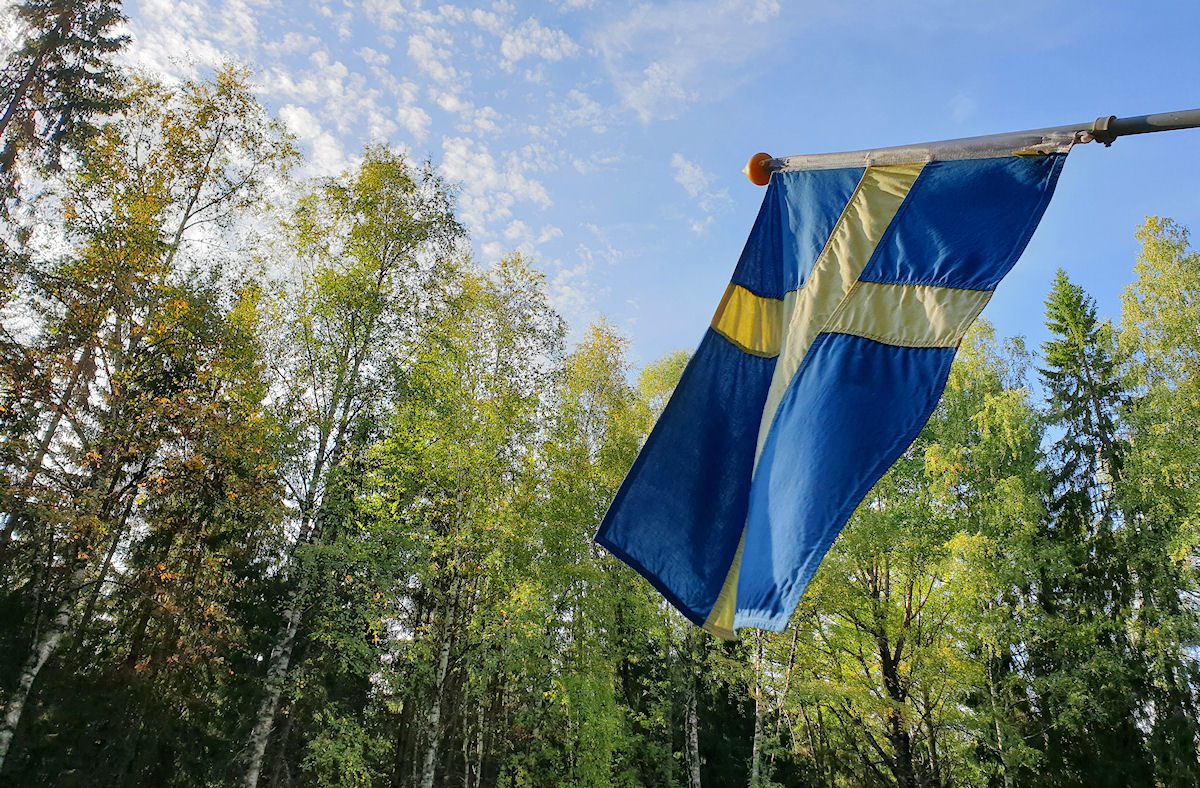
Many international media, including leading Belgian newspapers, published positive articles on COVID19 in Sweden September this year. But despite their optimism, the Corona situation in Scandinavia’s most populated and biggest country is doing far from good. I gave guidance in the popular Belgian Radio 1 program Nieuwe feiten on 23 September.
As seen earlier during Spring and Summer Swedish media with no exception continued feeding the people misleading news coverage. All media – including Svenska Dagbladet, Dagens Nyheter, Swedish Radio (SR) and Swedish Television News (SVT Nyheter) – proudly published that Denmark was having more Corona infections than Sweden. Their headlines and ingresses totally missing the point that the Swedish healthcare is testing several thousand times less per 100,000 people than Denmark. The more you test, the more infections you’ll find.
Even with the substantially less testing things have changed much. Even Sweden’s much criticized Public Health Authority (Fhm) changed course and for the first time since the COVID19 outbreak said that partners of Corona ill people should not go to work. Something common in many other countries, this “recommendation” is somewhat of a revolution in Sweden where the restrictions have been and are still quite liberal compared to other nations.
Sewage water
Royal Technical researchers (KTH) found that the number of infections in e.g. Stockholm are on the same high level as in May, when the big surge in thousands of Corona deaths took place. They compared the sewage water samples of the past months, and as many other international researchers have shown, our waste water is a great indicator for the number of infections in a certain area.
Facemasks
Meanwhile the discussion in Sweden on the use of facemasks has intensified just before the academic year started in September. Even the Fhm is now saying the facemask could be “complementary”, but only after the principal of the leading Karolinska Institute of university studies in Stockholm made wearing facemasks at its locations obligatory for all.
Tegnellizing
Still, the Swedish Public Health Authority is refusing to look at its neighbouring countries for comparison of how Sweden has tackled the disease. This has even got a new verb proposition by a language nerd to the country’s Language Magazine (Språktidningen): “att tegnella”, or tegnellizing. Named after the bolt, popular and notorious chief state epidemiologist Anders Tegnell. The propositioned meaning is “to talk about that we in Sweden are the best at almost everything, no matter what it’s about. What everyone else thinks is wrong and (the Corona situation) should not be compared to similar countries, but only with countries that are worse off”.
Scandinavian nations
Looking at the Scandinavian nations, which are logic to compare due to similar social economic standards and culture – moreover Stockholm is not that much different than Copenhagen or Oslo, Sweden stands out after months into the pandemic. As the number of infections is very much affected by the number of tests the number of deaths give a better indication. As of the end of the second week of October Sweden approaches 5,900 COVID19 deaths since March, compared to less than 280 in Norway, less than 350 in Finland and almost 670 in Denmark. As Sweden has twice the number of people than it’s neighbours those numbers should be doubled, but even about 1,350 for Denmark if the population would be twice the size is very low to the Swedish number, while the population density is higher in Denmark than in Sweden.
No second wave?
On the positive side, Sweden so far doesn’t seem to have a second wave – partly probably because of the high number of death in the first wave. At 10 October 2020 only 24 COVID19 patients were admitted at the Intensive Care Units in Sweden. Maybe there is room for some optimism anyway. | © 2020 Marcel Burger / nordicreporter.com (text and featured photo)
Gang violence Sweden is on the rise
Published on : by Marcel Burger

While business Sweden is more or less ruled by 16 rich families “above ground”, the underground business is run by approximately 40 criminal clans. While the number of criminal acts is not so much on the rise, the violence and the brutality of the gangs is.
Shootings in Sweden can happen almost anywhere now, including in city centres and “rich” residential area. In the past the criminal clans took out each others members in the more rougher parts of society, but no more.
Earlier this Summer a 12 year young girl was killed in a drive-by shooting at a petrol station south of Stockholm, an innocent victim as gang members wanting to kill two rivals but were poor in aiming. It was a new low in the ongoing war on the streets, where narcotics and who has control of what is an every day fight that gets normal citizens more and more in harms way. Shootings through windows of homes, killing of girlfriends and wives or assassination attempts in front of children is no longer an exception in Sweden.
The police has shown itself very much incompetent. A widely advertised Operation Rimfrost to deal with the increased shootings and bombings only shows how badly organised everyday police work in Sweden is, the leading expert professor of the Norwegian Police Academy recently said.
And now the news of how Sweden finds it hard to cope with the gang violence has reached countries further south as well. For the leading program NOS Met Het Oog Op Morgen I summed up what the problems in Sweden are, live on 5 August 2020. In Dutch available here at nporadio1.nl. | © 2020 Marcel Burger / nordicreporter.com. Feature photo by Israel Palacio/Unsplash
Conflict: Swedish Reindeer Shepards Take Norwegian Lands
Published on : by Marcel Burger

UPDATED, ADDITIONAL 3rd PARAGRAPH 20:25 10 July 2020 | Reindeer migrate mostly freely through the year. As they don’t have passports nor need to, for a long time Swedish and Norwegian reindeer caretakers were allowed to follow the herds. But it now leads to conflict, and the Norwegians are not happy with what the strongest critics call a Swedish occupation.
It all comes down to an old treaty. In 1751 Norway and Sweden signed an agreement, changed in 1650 and then again 1972 with Swedish reindeer caretakers no longer allowed to set up their own infrastructure inside Norway when following the herds. But in 2005 the deal ended. The Norwegians say the latest deal still stands until a new agreement can be worked out. The Swedes say the old one of 1751 is again in effect, and have started to build permanent structures again in Norway, to collect the reindeer cattle for owner marking and have moved along with 16,000 “Swedish” reindeer into the Northern Norwegian territory of Indre Troms.
The historical background is the split of the union between Norway and Sweden centuries ago. The Sami – the indigenous people of Northern Scandinavia – are traditionally the ones that take care of the Sami herds and they have been supressed by both the Norwegian and Swedish governments ever since. Some say the current Norwegian drive against the reindeer caretakers is just another attempt by conservatives to keep the Sami – who do not have their own state – away and deny them their way of living.
But a gentlemen’s between all parties says that the Norwegians use the areas in the winter, while the Swedish use them in the Summer. But as the Norwegians notice, the Swedes don’t pull back on their side of the border. So 15 years into the limbo status, the question is now high up on the agenda again. The herded reindeer live free but are cattle like cows, and the business is tough, economic gains – not territorial – are the driving force behind the current conflict. | © 2020 Marcel Burger / nordicreporter.com (text and photo). Title photo: Reindeer cattle wandering freely near the Norwegian border in Sweden
A different Midsummer, as Sweden let its elderly die
Published on : by Marcel Burger
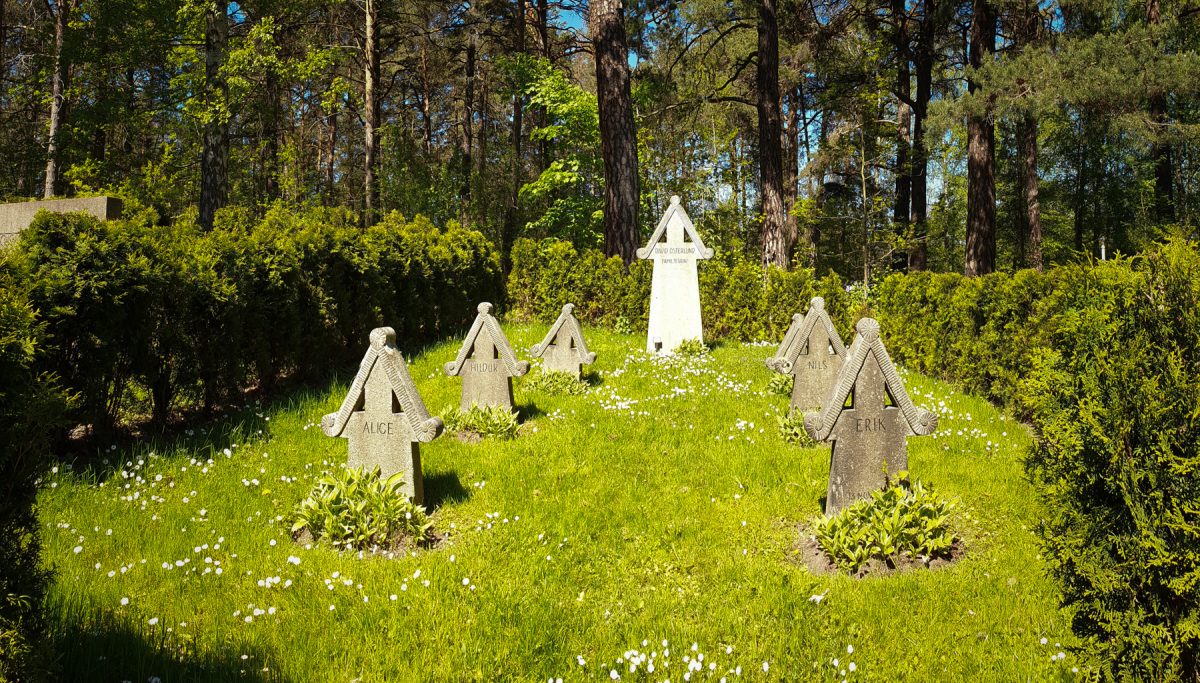
How badly prepared Sweden was for any pandemic became painstaikingly clear right from the beginning of the COVID19 outbreak. Apart from the lack of basic medical supplies in the hospitals, protecting the elderly totally failed. The nurses taking care of them were refused protection gear. Many elderly homes denied the elderly a chance to live, hospitals didn’t want them in the ICU and the central government forgot all about them when focusing solely on the health care.
Putting all the pieces of the puzzle together it is almost like Sweden had a structural plan to sacrifice the elderly when Corona was starting to go through its population. What was really going on, we’ve tried to figure out when I made a report for Dutch news background public TV program Nieuwsuur (News Hour) with reporter Saskia Dekkers, camera man Pieter Nijdeken and editor Luuk Mulder.
What went wrong with the elderly care the past couple of months in Sweden? Episode 9 of our #Nieuwsuur series Europe in Corona Times, replay here ⬇️.
With @nordicreporter and @luukjmulder https://t.co/P7idLj8KHn— Saskia Dekkers (@saskiadekkers) June 2, 2020
More than two weeks after airing our report, new evidence of the lack of respect for the lives of the elderly has come to light. In Sweden it are the regions that take of the healthcare, while the municipalities are responsible for the elderly care. But how much the care personnel tried, suppliers of medical equipment and even parallel options such as the Swedish nuclear plants, they all said no to the elderly care staff trying desperately to get proper stuff, according to research by Swedish Radio/EKOT. All was reserved in case “the state wanted it” or for the regional healthcare, meaning the hospitals. A month after the pandemic reached Sweden, elderly care organisations started to receive the first protection gear.
Virus spread like wildfire
At the beginning of June numbers of the Swedish Authority for Social Affairs (Socialstyrelsen) showed that 90 percent of all Corona fatalities in Sweden were 70 years of older. Of this group of deaths 49% lived in elderly homes while 25% got help at home of sometimes 25 different people (source: employees union Kommunal) a week. Routines were not in place, the inhabitants of the care homes, as well as personnel could not be tested. Managers and staff had no idea who was ill of Corona and who not, and especially due to the large number of temporarily, often rotating care personnel the virus spread sometimes like wildfire.

The Swedish Labour Inspection – officially the one that should see to it that the workers’ environment is safe – okayed many life threatening situation to medical and elderly care staff. In some cases the judge had to step in, asked to decide after the workers union hit the alarm. A spokesperson said in many cases staff feared their own lives and of those they were taking care of.
Speeds up dying
The hospitals, care organisations – privatised and public owned – as well as regional politicians put the elderly at risk. Politicians responsible for the healthcare issued new guidelines in the mid of the crisis saying face masks and some other protective gear would no longer be necessary in many facilities, a decision that many medical experts in Sweden think was outrageous. Moreover, elderly home nurses were ordered to give morphine, which speeds up dying, instead of providing the sick elderly with life saving oxygen. Some experts argue these were always made on an individual bases, but it happend so wide-spread and the lack of oxygen at many facilities was that common that it raises serious questions about the philosophy of it.

In our Nieuwsuur TV report Helén Glückman says that they just let the elderly die, including her 83 year old father who was one of the inhabitants of the hard hit Berga elderly home in Stockholm suburb Solna. At least a third of the 96 elderly there passed away of COVID19 when the virus wiped out room after room, floor after floor. The public prosecutor even launched a criminal investigation into the issue, and in at least one other crying case in Stockholm, as faul play was suspected.
Stockholm’s leading hospital Karolinska ordered its medical staff not to admit any patient of 65 years and older with an underlying disease besides Corona, acting against regulations of the regional authorities and even the much criticized Public Health Authority (Folkhälsomyndigheten). Asked by Swedish media why a spokesperson just said “it was their policy”.
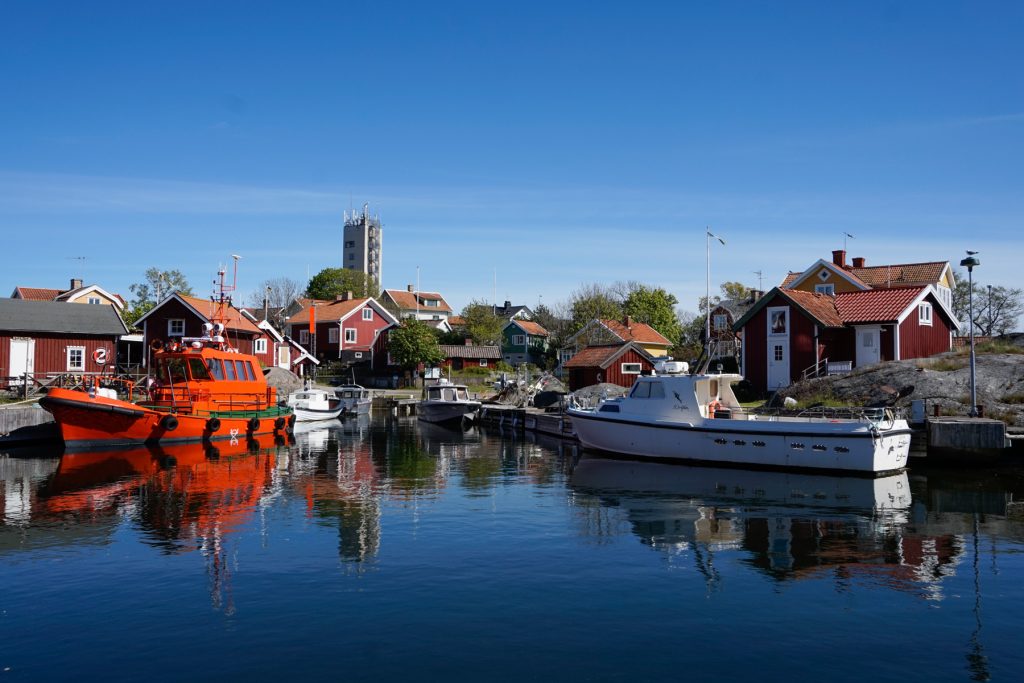
Discrimination of Sweden’s elderly
Sweden’s oldest member of parliament Barbro Westerholm (84) put herself and her husband in quarantine on Landsort/Öja, at the most southern edge of the Stockholm archipelago. Compared to many they were lucky, having an option to leave their apartment in the heart of Stockholm for her family owned house. In a straight line 65 kilometres from the centre of the Swedish capital – with about 15 percent of the country’s population of 10 million, but with half the COVID19 cases – she managed to stay safe working like many remote through telephone and videoconferencing through the web.
“There is a common old-fashioned view, with prejudices, in Sweden when it comes to the elderly. That is something the Corona pandemic has made even more clear. (…) The discrimination of the elderly, it is so wrong,” Westerholm says on camera.
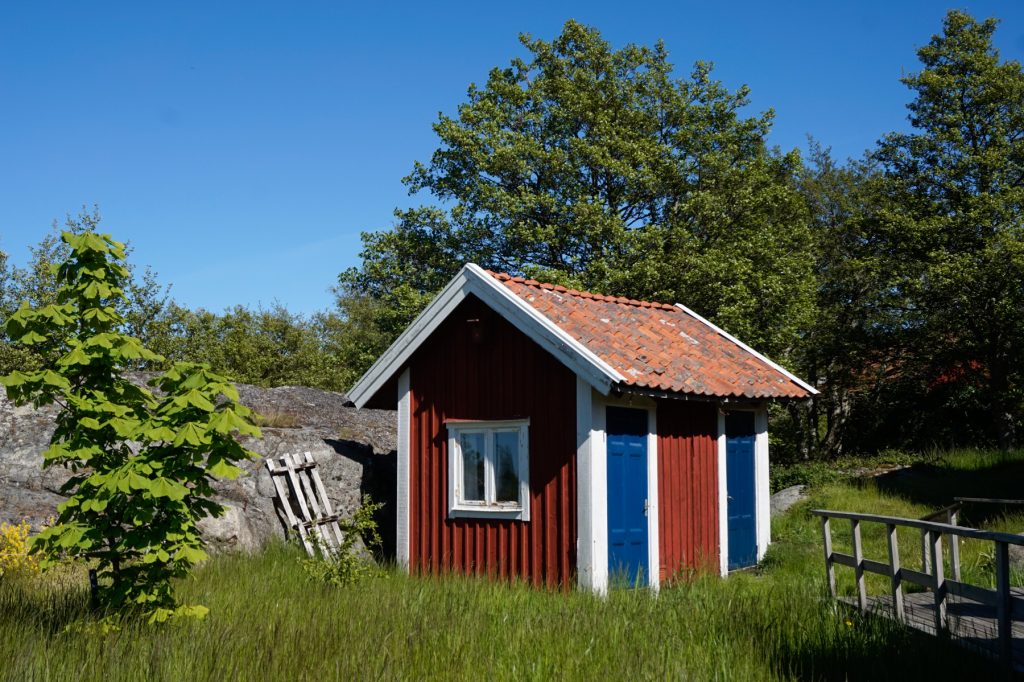
Midsummer to dearly miss
After months of almost no lock-down and delayed introduction of better routines in the elderly care, Sweden has now reach Midsummer. Normally a time of the year when people celebrate the fully sunny days with their extended families. But this year many will have somebody to dearly miss. While most of Europe is slowly getting control of COVID19, and Scandinavia especially, Sweden keeps standing out. With more than 5,000 deaths, per capita substantially more than many other countries, just before Midsummer, and counting. | © 2020 Marcel Burger (text and photos) / nordicreporter.com
Who Killed Swedish Prime Minister Olof Palme? 34 Year Old Mystery Solved
Published on : by Marcel Burger
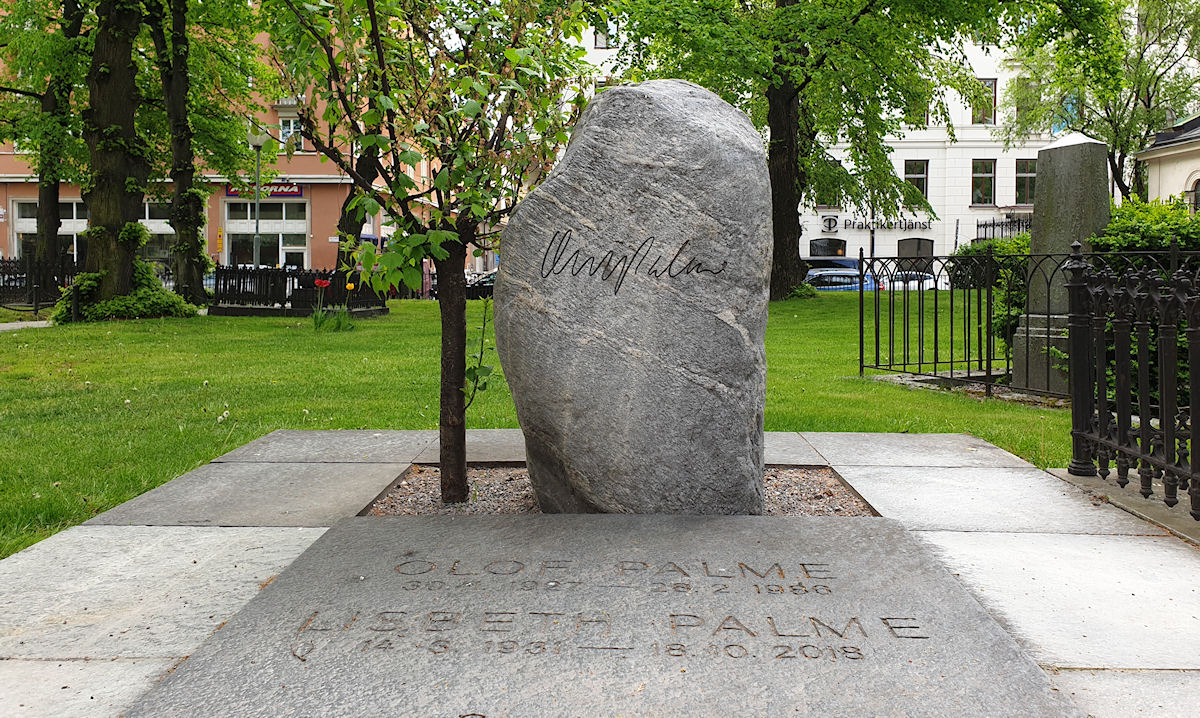
UPDATED 10 JUNE 2020, 09:32 / 12:07 | Swedish Prime Minister Olof Palme was killed by a single .357 Magnum bullet from a revolver when he left a cinema in central Stockholm on 28 February 1986. But who killed him has been a mystery for 34 years. No longer, as the Swedish prosecutor and special Palme Group of the police announced on 10 June 2020 that the likely killer is Stig Engström, aka Skandiamannen.
If you understand Dutch listen again to VRT Radio 1, De Ochtend,
of 10 June 2020 around 08:30. The soundbite you’ll find underneath the article here at radio1.be.
The murder of Olof Palme is a national trauma for Sweden. Despite 241 metres of book closets of paper archives of the investigation – it would take about 9 years for a trained legal expert to read them all, the Swedish police says – and another 11 metres of recordings, 10,000 police interrogations, 22 direct witnesses and 134 people who said they committed the crime, the real killer has been “on the loose” all the time – and can never be charged since he is no longer alive. But, the country needed clarification, to move on from its past. The Palmegruppen – the changing team of state detectives that has been on the case ever since the murder – still received 10 e-mails and letters a week of people presenting their theories. That’s how much the case has kept Swedes confused for such a long time.
The Murder of Olof Palme
Prime Minister Olof Palme was shot at 23:21 on 28 February 1986 on the corner of Sveavägen and Tunnelgatan, in the very centre of Stockholm’s inner city, after leaving the Grand cinema with his wife Lisbeth, their son and their son’s girlfriend. The assailant came up behind them, fired one shot that killed the statesman, a second injured his wife Lisbeth.
The Weapon that Killed Palme
The murder was committed with a .357 Magnum bullet fired from a revolver. The police has narrowed the possible weapons down to seven brands: Smith & Wesson, Ruger, Taurus, Kassnar, Escordin, Llama, Ruby. Which it really was, we might never know.
According to the Swedish nationwide daily Aftonbladet the murder weapon was found after three decades. But the police and prosecutor denied this on 10 June. The bullet that killed Olof Palme and the one wounding his wife were in such bad condition that it could not even be excluded that they were fired from different guns, the leader of the police investigation said. 788 weapons were test-fired, but the murder weapon might never be found, at least not “with today’s technical development” the prosecutor said.
My second radio talk of 10 June on this item was solely focused on the suspected killer of Olof Palme. Listen again to VRT Radio 1, Nieuwe Feiten,
of 10 June 2020, 34 minutes into the broadcast. Check Radioplus.be
The Main Suspect
Skandiamannen (Stig Engström)
A graphical designer who worked for pension fund Skandia nearby the place of the crime. Stig Engström, aka Skandiamannen, was 52 years at the time of the crime and back then presented himself to the police as a witness. According to the prosecutor on 10 June, Engström was an alcoholic and had problems making both ends meet.
Swedish journalists that looked into this suspect in 2018 found out Engström was openly critical to Palme and had access to a room at home filled with weapons, including one that matched the .357 calibre. But technical scanning of the weapon excluded it as the murder weaopn. None of the witnesses of the crime have seen a weapon in Stig Engström’s hands.
He left his office at Sveavägen 44, close to the Grand cinema where the Palmes went, at 23:19 the night of the murder. This has been proved by a electronic card clocking system that his company used. He worked extra that night, as he had planned to go on a holiday trip with his wife the day after. According to the prosecutor he had planned to take the metro at 23:48, but the prosecutor said on 10 June that it is not clear which road he walked towards the metro, or that he wanted to take the bus instead. All we know he had a window of about half an hour between leaving work.
Stig Engström himself said, according to the statements recorded by the police, that he hadn’t noticed the Palme couple when he left his work, but that he saw them when the shots were fired. He said he approached the lying Olof Palme when other people were providing first aid. Engström also pointed out a suspect: a man with a blue jacket. Engström said he spoke to Lisbeth Palme and to a police officer. Engström later changed some of his statement or details of his statements, but none proved right. No one has seen him on the scene of the crime and Lisbeth Palme or police officers have not seen Engström at the crime scene at all.
The Skandiamannen killed himself in 2000, at age 66.
The Unusual Other Suspects
The Palmegruppen has had six other suspects suspects. One was initially convicted of the murder.
Christer Pettersson
In 1989 local criminal Christer Pettersson was found guilty of the murder, being pointed out by Lisbeth Palme as the attacker, but the Court of Appeal (Svea Hovrätt) freed Pettersson. The prosecutor emphasized on 10 June that Pettersson was the man she saw when she turned around after the shot at Olof Palme was fired, but that Lisbeth did not In 1997 the case was officially closed and Pettersson died in 2004, at age 57.
Christer A.
Christer A., aka Christer Pettersson double, was a third main suspect. He lived only 15 minutes walk from the spot where Palme was killed, he owned a Smith & Wesson .357 revolver and he hated Palme. Police never found the gun however, and when they knocked on his door in 2008 he shot himself with anther gun and died.
The “33 Year Old” (Viktor Gunnarsson)
Viktor Gunnarsson, commonly known as the suspect “33 Year Old” (33-åringen) was a gun loving Palme hater. But he had a working alibi and his clothes didn’t match Lisbeth Palme’s testimony. The 33 Year Old was in 1993 murdered by a ex-police officer in North Carolina, United States.
The Kurdish Separatist (PKK)
Olof Palme’s government classified the Kurdish separatist organisation PKK as a terror organisation. The police interviewed at least 20 Kurdish in 1987, but didn’t follow up on it.
The South African Assassin
The South African security services were another suspect, as Olof Palme was strong critic of the Apartheid suppression policy of the black majority by the then solely white minority government of South Africa.
The Swedish Police Officer
The Palmegruppen even looked into the option that one of his own – a Swedish police officer or a group of radical police officers, either from the regular police, from the national security police (Säpo) – was behind the murder of the prime minister. Some sources have questioned Palme to be a spy or pawn for the then Soviet Union, as he was quite liberal with his opinions towards the then enemy of the west. His left views, strong criticism against “American imperialism” was not very popular among some. But no police man or woman was never close to be accused of the murder, neither was anybody in the Swedish security police.
The End of Confusion?
After an investigation of 34 years, the murder case of Swedish prime minister Olof Palme will now be closed. The police and prosecutor have pointed out the likely killer, but since he is dead nothing can be done anymore. The question that has kept Sweden confused for decades, Who killed Olof Palme?, has been answered. But without real technical evidence, a guilty statement or a conviction.
Another question that remains is why police in 1986 did not take Stig Engström in custody as a likely suspect. The public prosecutor during the 10 June press conference: “If the current (special investigative) Palmegruppen would have existed (with the current members) 34 years ago, there would have been sufficient suspicion to arrest Stig Engström for the murder of Olof Palme, maybe found the murder weapon, do a house search, secure DNA and secure more evidence.” | © 2020 Marcel Burger / nordicreporter.com (text and photo). Featured image: the grave of Olof and Lisbeth Palme (died 2018) at Adolf Fredrik Cemetery in Stockholm, a few hundred metres from where Olof Palme was killed in 1986.
Despite Staying Open, Sweden’s Economy Takes a Big Hit Too
Published on : by Marcel Burger
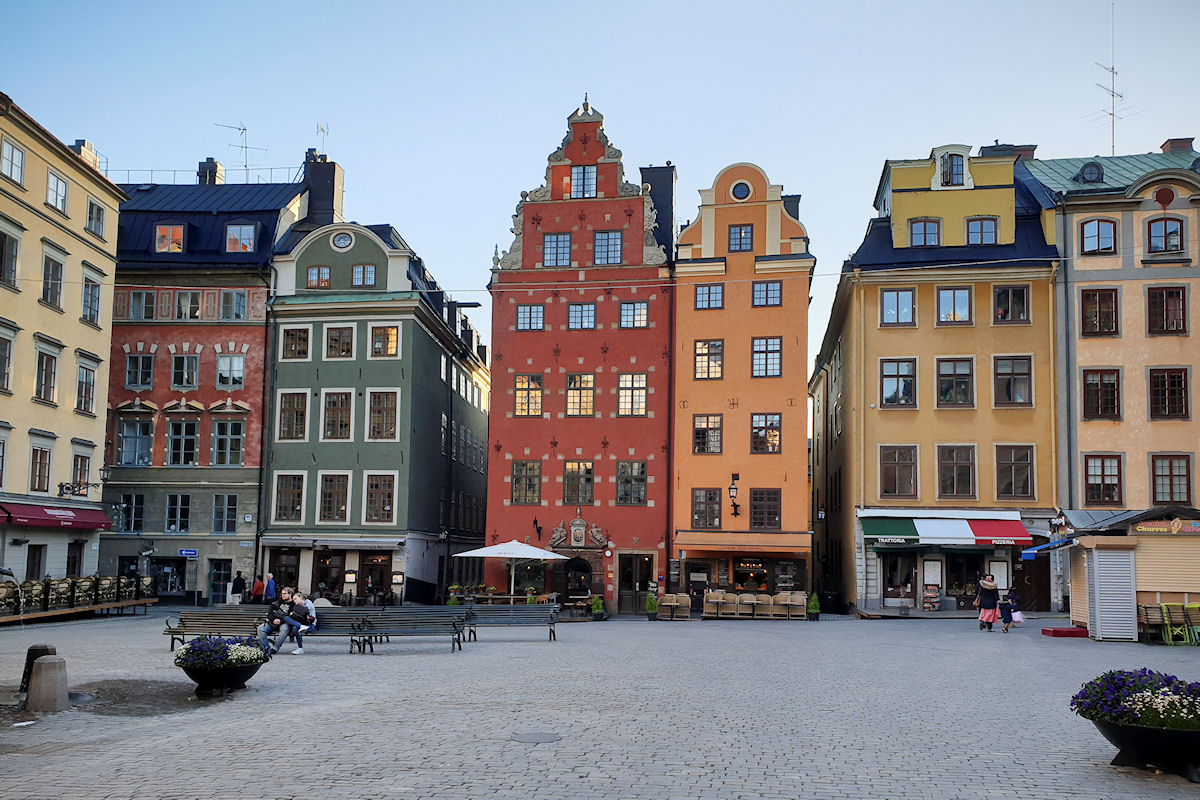
At the end of May 2020 I worked with Dutch Nieuwsuur TV reporter Saskia Dekkers, camera man Pieter Nijdeken and editor Luuk Mulder on two reports on Sweden in Corona times. While Sweden kept much of its society running, to save businesses many said, our report showed that the Swedish economy will not be better of than the country’s with lock-down.
Featured image: Stockholm Old Town’s main square
on a regular May night. Normally the place is crowded with tourists.
The utopian images of Swedes drinking at outside seating areas of cafes, eating at restaurants, having a busy nightlife while preparing for them at the local hairdresser. The footage has gone all over the world and now that more European countries have opened up, Sweden says it has proved the other’s right: a lock-down is never a good idea.
Onze #Nieuwsuur reportage over de Zweedse economie en de staatsepidemioloog, deel 8 van onze serie kunt u ⬇️ terugkijken.
Met @nordicreporter en @luukjmulder https://t.co/dd6YWCxGaz— Saskia Dekkers (@saskiadekkers) May 28, 2020
But as Sweden tried to keep as many companies open – including the hairdressers, gyms and swimming pools – many Swedes said it was to keep the economy going. Support your local entrepreneur was what many did and it is a patriotism that already was adopted by many Swedes even before COVID19 became a problem.
However, the relatively liberal Corona restrictions were never done out of economic reasons, Sweden’s chief epidemiologist Anders Tegnell said during an interview. His job was only to command the spreading of the virus. But his straight forward statements, often not based on scientific research and often not part of his official area of expertise, have made him a cult figure in Sweden. Up to recently, about 90 percent of the Swedes trusted Tegnell. Even if the trust in his Public Health Organisation (Folkhälsomyndigheten) has diminished under 70 percent in the first week of June, Swedes seem to like his approach and the way he makes them feel everything will be okay and that Sweden does things better than other countries. Although Tegnell will be the first to deny it is a game, he also have said several times that others were wrong.
While Tegnells being in the footlights, the Swedish government has been boasting on the sidelines to take any measures necessary with additional recommendations. Prohibitions are not the thing in Sweden, as the country’s leadership trusts the citizens to follow the advices without having to force them upon the people. In a controversial move prime minister Löfven announced that as of 13 June domestic travel restriction advise of no more than 2 hours from home will be lifted, less than a week after Tegnell said local holidays would be best.
Many entrepreneurs in the tourism and gastronomy industry were quoted by Swedish media to be happy with the governments lift of travel restriction recommendations. Sweden may never have closed the borders for travellers from inside the EU, the EU countries have closed for Sweden. The Netherlands, Greece, Cyprus and even Sweden’s neighbours Norway, Denmark, Finland, Latvia an Lithuania are not happy to have Swedes coming over this Summer, and advice their citizens against travelling to Scandinavia’s biggest country. COVID19 is out of control in Sweden, they say, looking at a death rate closing in on 5,000 and soon 20 times higher than the Corona fatalities in Norway.

Missing out on foreign tourists will certainly hit the travel industry inside Sweden. Hotels are already looking for alternative options for months, even offering their rooms long-term competitive to apartment monthly rental prices in the cities they are located.
Whether the incentive will help remains to be seen. Two of Scandinavia’s biggest banks have calculated that the Swedish economy will take an equally big hit as its neighbours.
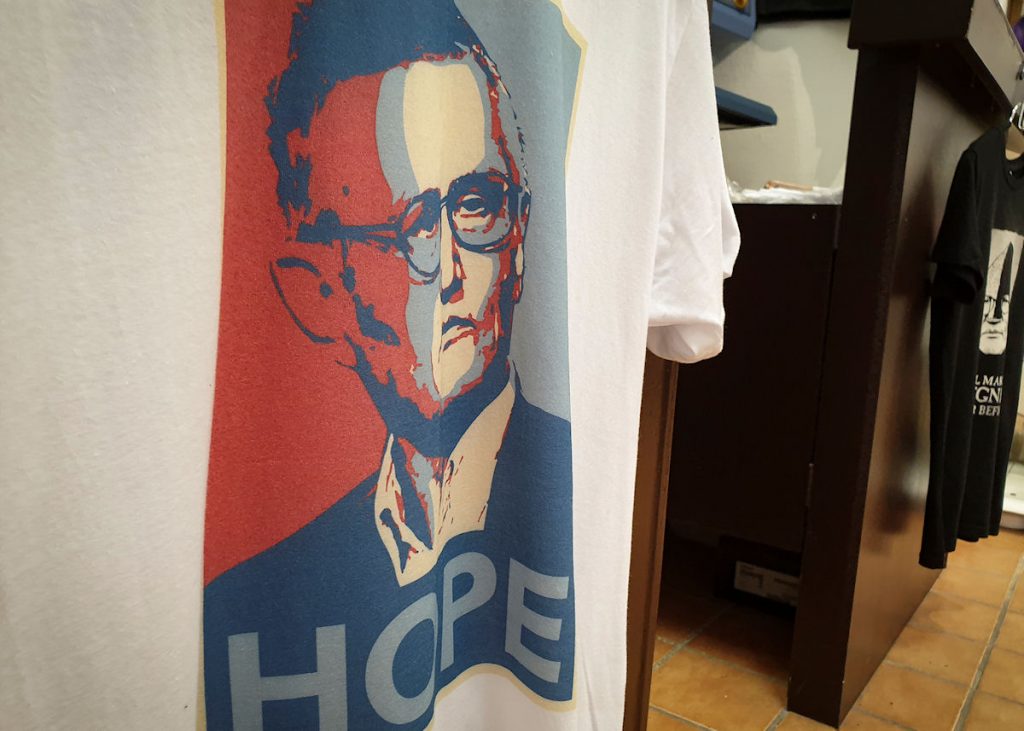
The Swedish government meanwhile expects a decreased national income (GDP) of 4.2% this year, going further down to minus 10% in 2021. The country’s big corporations have laid of thousands, something the responsible ministry calls “unexpectedly” high. Unemployment will end at 9 to 10% in 2020, possibly growing to 15% next year.
Saving business has not been proven easy in any of the COVID19 approaches. The Swedish one, seen as one mostly focused on the economy, has in that respect equally failed as the countries with lock-down. Sweden will be seriously hit too, but with the difference of a seriously high loss of lives compared to its neighbouring countries. A double strike. | © 2020 Marcel Burger / nordicreporter.com (text and photos)
Hard-pressed Uppsala Academic Hospital refuses close to a million euro, while depriving the staff from food
Published on : by Marcel Burger

Throwing away between 720,000 and one million euro while trying to get the finances under control. A decision by its management has put the Uppsala Academic Hospital, a leading medical facility in Sweden, soon out of a good option to feed the thousands of staff while they are fighting the COVID19 pandemic.
Featured image: Sjukhus, literally meaning “sick house”
in Swedish (Photo by Marcel Burger)
Like in most other countries the teaching hospital in Uppsala, with 200,000 the fourth largest municipality of Sweden, is very much engaged in treating patients with Corona and many other diseases or injuries. Apart from the lack of protection gear the hospital has had a shortage of much of the basic consumables already months before the crisis, after politicians responsible for the health care in the Uppsala region changed to a cheaper supplier that could not deliver.
The newest fiasco is the hospital’s own personnel restaurant, with 400 seats and take-away food for the 8,000 hospital staff. The kitchen and restaurant have been outsourced for years to a commercial partner for years, and it pays both rent and a revenue percentage of the food sales. Ackis – as the Uppsala Akademiska hospital is locally known – wants to build a new restaurant, but the planned destruction of the building has been postponed until 2022. However, the hospital leaders have chosen not to use the possibility to generate income, while at the same time have reportedly not succeeded in finding an adequate food solution for its workers.
Fill financial gaps
Keeping the hospital restaurant open for another two years run by a commercial partner would give Ackis about EUR 750,000 to close to a million in income. The current money flow from the restaurant subcontractor is about EUR 30,000 a month, sources say. The money could likely be of good use to fill gaps in the financial budget, where already EUR 28 million had to be cut before the COVID19 pandemic, to make ends meet.
Mountain of plastic boxes
A take-away option in one-time use plastic boxes has apparently not materialized, since no supplier has seemed eager to take up the offer so far. Moreover, the amount of waste created with the take-away solution would give the hospital extra garbage disposal costs, adding to the up to a million already lost on turned down restaurant income until the restaurant building will be demolished. A mountain of plastic boxes is likely not the preferred image that the hospital’s host city would be happy with. The municipality board has been boasting to be the most sustainable city of Sweden as it is the national winner of the WWF international One Planet City Challenge 2020 and has been running to become the best in the world like in 2018.
Contaminated drinking water
Lack of funding and management decisions from both responsible regional politicians and the hospital leadership has plagued the Uppsala Academic Hospital for years. A new building has the hot and cold water pipes, constructed inside the walls, too close to each other, contaminating the drinking water with bacteria. Truck loads of bottled water have to be delivered continuously to keep the building operational.
Labour inspection
The leadership’s focus on IT systems that don’t seem to be able to communicate well with humans has caused the worker unions and the Swedish Labour Inspection to threaten Akademiska with legal steps and legal fines after staff hit the alarm out of frustration and out of fear of patient safety.
The worker organizations reportedly are now also looking into what the hospital leaders are doing with the food supply to its employees. With thousands of hospital workers soon out of a proper capacity to feed themselves, it will just add to what several staff members have named as “a unnecessary stressful working environment”, even before COVID19 times. | © 2020 Marcel Burger / nordicreporter.com. This story is based on publicly available sources, double-checked with several people up to the rank of medical doctors inside the Uppsala Academic Hospital. For the sake of their job and lives they remain anonymous to the public.
Opinion: Will The “Swedish” 6-Hour Working Day Break Through in Post-Corona Times?
Published on : by Marcel Burger

Once COVID19 restrictions are lifted many companies and organisations will be looking for creative ways to cut costs and stay alive. Economizing on staff is one way, but can a smaller crew do the same job in less working hours. For example: will there be a breakthrough of the “Swedish” 6-hour working day?
Two years ago the municipality of Amsterdam, the Netherlands, wanted to try out a 6-hour working day for its civil servants, “following the example of Sweden”. In the biggest Scandinavian country such experiments have been going on for some time. The results are mixed.
Confusing and stressful
As early as the 1990s government and commercial organisation in Sweden have been trying to make their organisations more efficient with shorter working days. In Kiruna, in the far north of Sweden, the 6-hour working week was ended after 16 years. “It proved too difficult and too confusing to properly manage the staff,” a spokesperson said, “and it also turned out to be stressful for the employees.”
It turned out that people could not do their tasks in 6 hours. “It created much stress and after initial success sick leaves were on the rise.” Kiruna introduced the 6-hour working day to reduce absenteeism and give people more freedom.
Struggling to make leaner
Getting back after the COVID19 hit organisations might introduce shorter working days simply to cut costs, while keeping operations going. A number of municipalities in Sweden have been financially struggling for a while already. Changes in the organisation were already on the agenda before 2020 became a disaster.
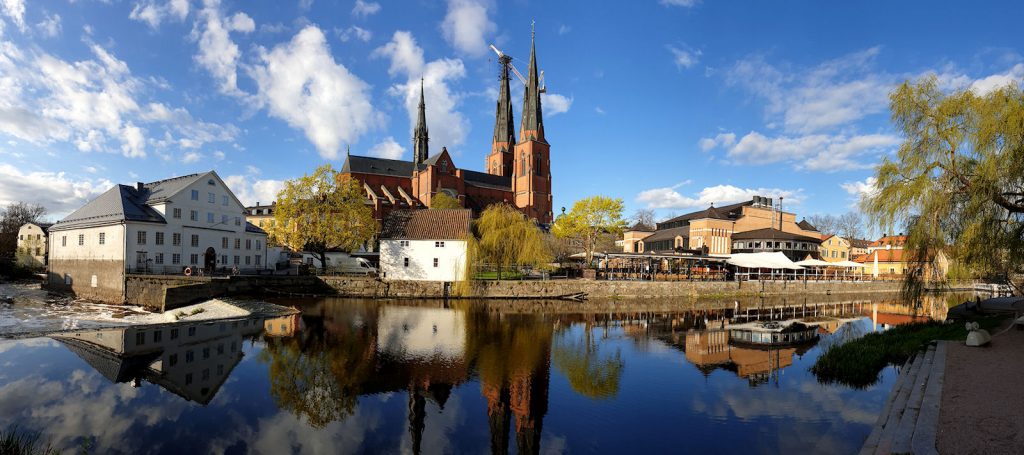
Take Uppsala, with about 200,000 people the fourth largest agglomeration of Sweden. The municipality announced cuts of about EUR 30 million already in January 2019, and it kept facing financial challenges when the 2020 budget was made. Making the organisation leaner – read: change organisational structure and move around people – has been a priority for some time. Like many other municipalities in Sweden it cut second language teaching (Modersmål or Mother tongue teaching) at pre-schools substantially and fused the pre-school Modersmål organisation with the one for elementary schools, cutting a few jobs here and there along the way while limiting the amount of man/woman hours.
When the Corona disease struck in Spring 2020 talks about traditional yearly Spring increases of individual wages were immediately frozen. But so far Uppsala doesn’t seem to chose 6-hour working days. Instead it focusses on minimizing the absolute number of its personnel by trying to have staff work full-time in stead of two or more working part-time. In theory this could mean an elementary school teacher with a workload of 80% at his or her current school could be requested to babysit at a pre-school for the remaining 20% of a full-time job.
Working in shifts
For some businesses a 6-hour working day fits just perfectly. Take industries. Car maker Toyota in Gothenburg used to have two shifts of each six hours. Home care in Swedish municipalities would be another field to implement 6-hour working days, since staff also works in shifts. But employees and the biggest union say current care personnel already find it hard to do all duties in the given 8-hour working day, something that has increased in Corona times as more time needs to be allocated for changes in protective gear, safe ways of treating people and sanitising.

Perhaps the biggest problem is to keep the fundamental principle of equality within one organisation or company. There might be those who can handle less hours and those for whom a shorter working day with the same tasks is too stressful. If you cannot implement it for everyone, it creates disparity. And especially in Sweden, inequality is not the way. | © 2020 Marcel Burger / nordicreporter.com (text and photos). Featured photo (tittle photo) by Burst/Pixnio
Risky Business in Sweden: 220,000 Litres of Oil Resting on Drinking Water to help Microsoft
Published on : by Marcel Burger

The 14th largest city of Sweden can be entirely without drinking water if a new electricity generator containing 220,000 litres of oil breaks open. The municipality’s environmental office has said no to constructing it, but Gävle’s politicians are overruling this. At stake is the city’s good name, as the power house will support the new data server halls of one of the the world’s biggest tech giants: Microsoft.
It is the Swedish state owned energy company Vattenfall that has requested an exclusion from normal environmental rules to build the transformer station containing tons of oil. Vattenfall argues its construction is extremely safe, that it will not leak and that it is needed to give Microsoft its electricity supply for the data server hall in Stackbo, Gävle. This is only one of Microsoft’s three locations in the area, as the company bought similar chunks of land in Gävle’s Ersbo and in Tuna in Sandviken. On each plot a server hall of 23,000 square metres will arrise. An alternative placement of the transformer means kilometres of additional powerlines above the landscape, Vattenfall argues, with risk of supply shortages in case a storm breaks the lines. A big basin underneath the power plant is able to catch all 220,000 litres of oil in the very unlikely even of a leakage, says the energy company.

Microsoft’s investments are very important to the region. Not only do they come with millions of euros flowing into buying property and the construction of the buildings, they will also give Gävle a change to come back as an industrial power. The city has been struggling for years to combat unemployment, especially after Swedish tech giant Ericsson ceased its operations here a decade ago. Each new Microsoft location is to have at least 60 full-time employees, but spin-offs and the increased status is likely to attract more investors and create more jobs.
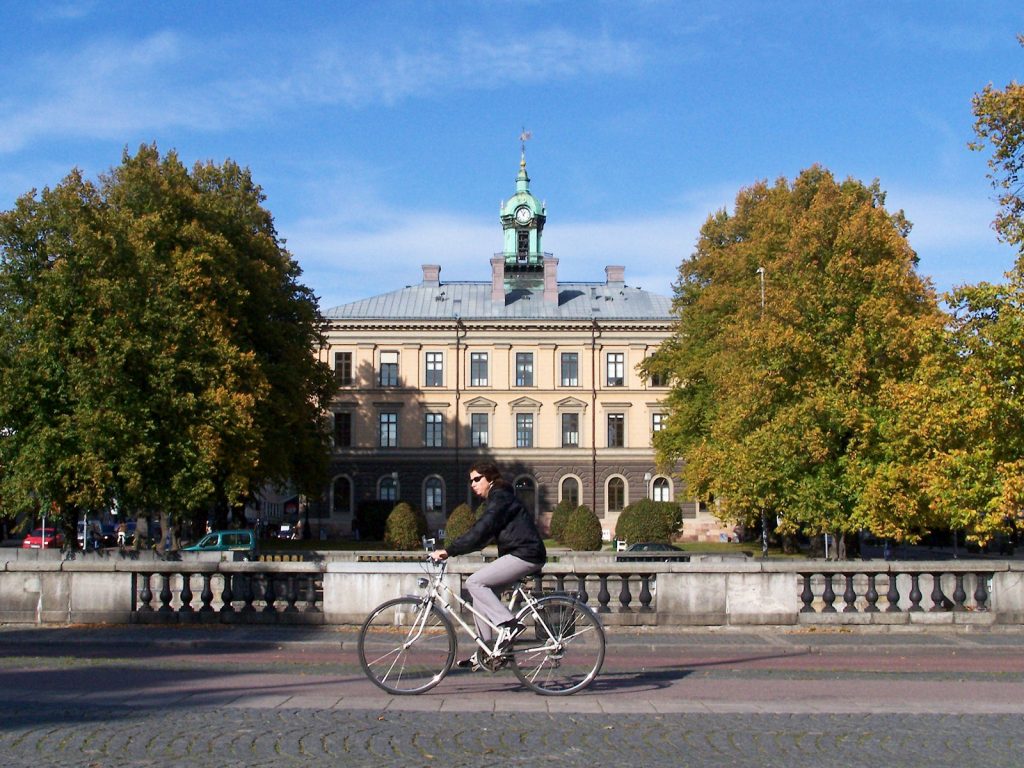
That’s why politicians in Gävle are so eager to facilitate the needs of the IT giant. But the area of the data server halls is also the number one provider of drink water to the region. In case the transformer house ruptures, Gävle will be out of drinking water, the city’s environmental office has warned. Include Sandviken and a total of almost 100,000 people might be affected by an oil spill. The negative impact on animals, the ecosystem and possibly even farmers’ food production is not included in this calculation.
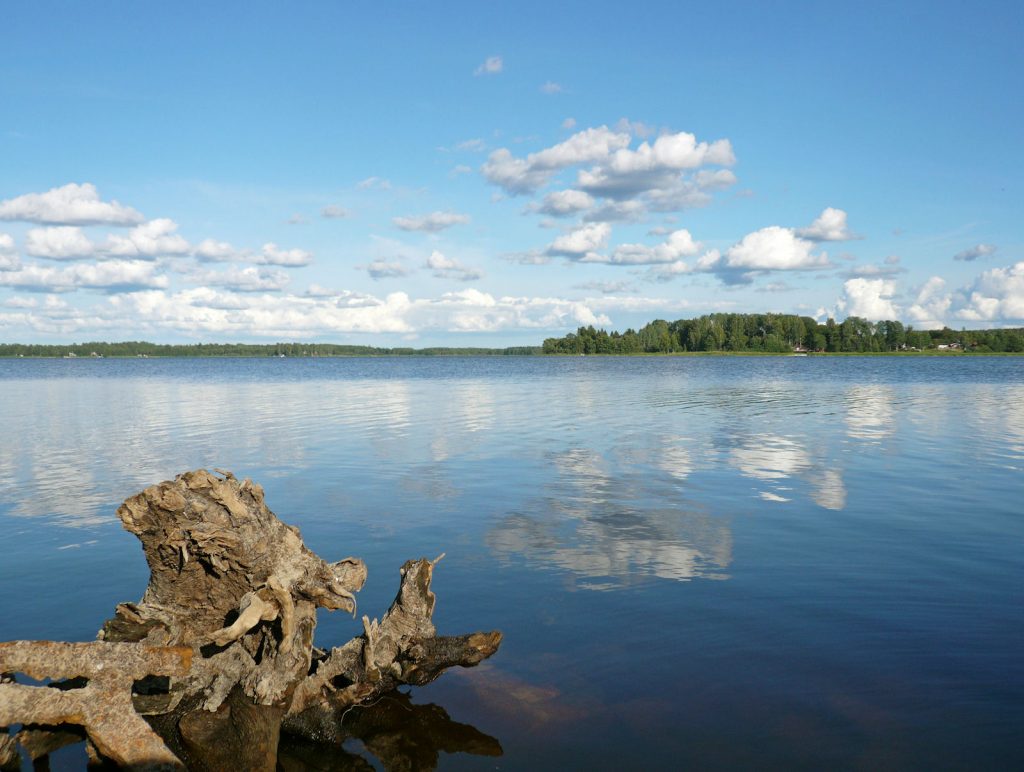
It is up to the higher authority, the provincial board of Gävleborg, to decide if Vattenfall will be granted the exclusion to build the transformer in the very sensitive drinking water area, to serve Microsoft. Whether the board values the energy company’s and political argumentation over the environmental one is likely to be clear by the first week of May. | © 2020 Marcel Burger / nordicreporter.com (text and photos) Featured (main) image: nature area just a few kilometres north of the Gävle/Sandviken locations of Microsoft
Don’t panic, but Sweden moves slowly into COVID19 emergency
Published on : by Marcel Burger
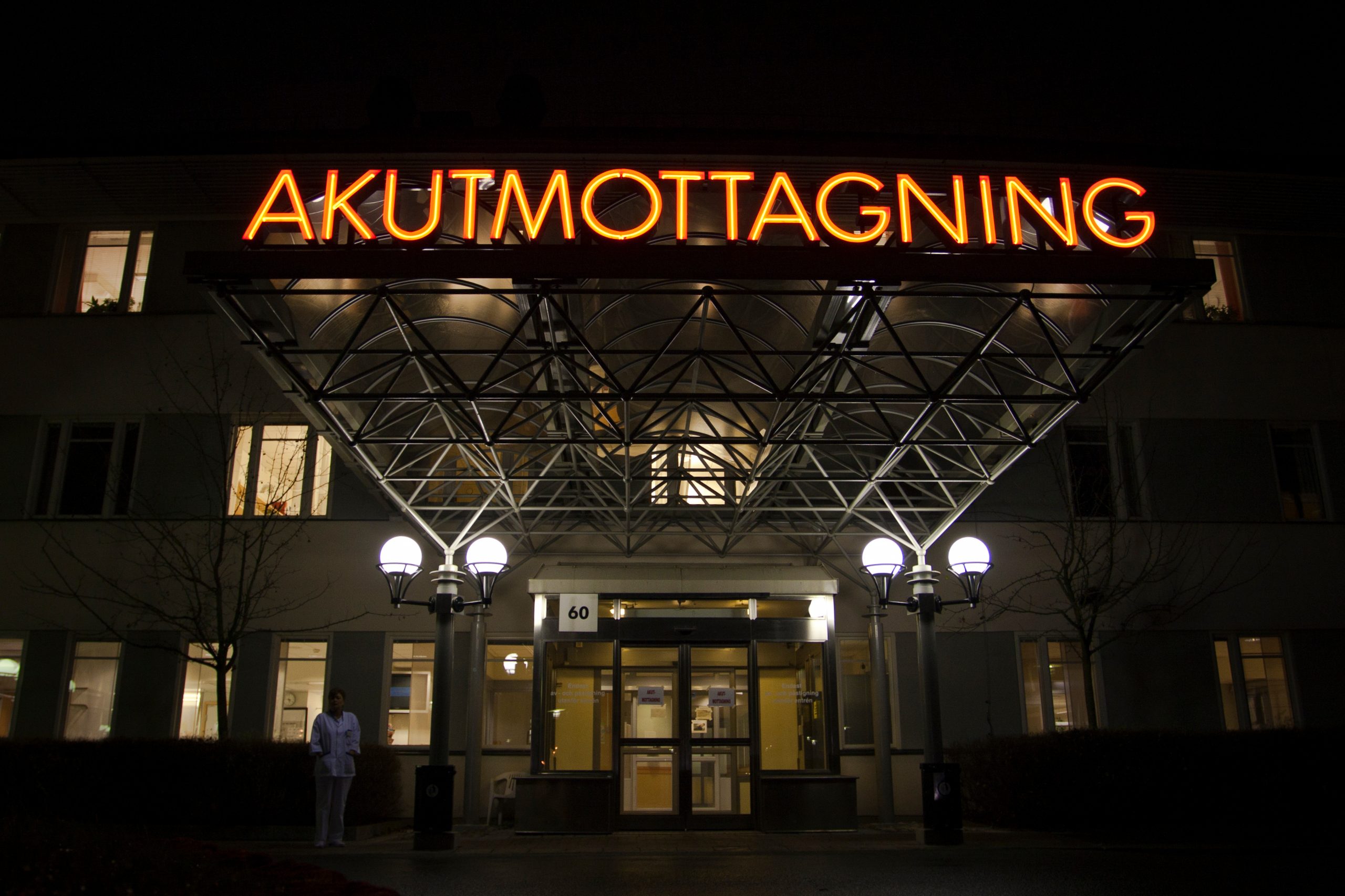
Hospital signs (Emergency), Akademiska Sjukhus, Uppsala, Sweden (Sverige)
When the Corona pandemic hit Europe there was one country that kept drinking beer at outdoor seating areas, one country where the people were smiling in the sun underneath cherry blossom trees. But despite media mass reporting how “relaxed” Sweden was letting the Corona virus get its way, the truth has been less liberal than many think.
The rosy press conferences by Sweden’s state epidemiologist Anders Tegnell of the Public Health Authority (Folkhälsomyndigheten) are by now already legendary. Being loved by many – the Facebook fan group Vi stötter Anders Tegnell & co (FoHm) passed 60,000 members during the weekend – and being despised by many, including leading Swedish scientists and experts, Tegnell has managed to downplay the effects of COVID19 on Sweden ever since the country’s top virus fighter spoke the legendary words “this will stay in China” months ago. But even Tegnell has accepted the fact that this “judgement proved not right” in an interview with leading Swedish newspaper Svenska Dagbladet recently.
Cry for help
Forget the talks in front of the spotlights. On the real battlefield of COVID19 more alarms have been sounding for a while already. Care personnel, including in hospital departments that are treating patients critically ill of the Corona virus, are without basic gear as gloves and mouth masks. From several sources I’ve heard about illegal threats to personnel who was willing to go public with their cry for help. Colleagues and managers have been threatening their co-workers with reprimands, or saying it would be bad for their job or their career if they were openly critical towards their hospital or employer not giving them what they needed. Show “loyalty against the country” was even mentioned as a way to make people shut up.
Safety stop
On 3 April it was even enough for a Gothenburg department of one of the powerful unions of Sweden. They called a “safety stop”, meaning that workers representation feels its members are in severe danger. Medical staff at the Eastern Hospital of Gothenburg (Östra sjukhus) attending 18 elderly people with possible COVID19 were put to work with face shields and protective clothes, but without mouth masks. Many regional bosses of Swedish healthcare have taken away this requirement without any explanation (meaning, they have not stocked up before the Corona crisis and are out, but don’t want to admit they are exposing staff to danger), but union Kommunal feels this is against the Public Health Organisation’s guidelines when in close contact with COVID19-infected patients. The “skyddstopp” in Gothenburg was very rare, as in most other regions the culture of silence and keeping a blind eye has been very common.
Don’t talk about it
Sweden is mainly managing not to panic its people. A illustration is the phone call an ill friend of mine had with the official healthcare authorities. Showing symptoms of Corona herself, it was very much “okay” for her kids to “keep playing with friends”. The medical official even adviced her against isolating herself, a standard demand in many other countries. “It can be a cold, a flu or Corona, but in any case your family members are infected already anyway”. Asking the medical helpline – coming to hospitals is very much restricted for only the severely ill – if she should tell the people my friend has been in contact with or the parents of the friends of her kids. “Noooo, that would only bring panic. Don’t talk about it.”
On at least one pre-school in the Stockholm area I know there is a teacher seriously sick, another staff member has confirmed COVID19. But the other teachers and child caretakers are not allowed to make anybody aware of it, because people might panic.
Stockholm
The systematic censorship layed down by Swedish authorities has not stopped Stockholm’s Public Transport Organisation (Stockholms Lokaltrafik) for publicly announce a slightly alarming message: “Please, do not travel with us unless you have an absolute vital role in society and you cannot get there in any other way.” It came after weeks of criticism that buses were overly crowded and any healthy space between people was severely violated.
Corona deaths Sweden
Don’t panic maybe one strategy to combat the COVID19 virus, but while neighbouring countries Finland, Norway and even Germany have kept their number of deaths relatively low, Sweden passed 400 deaths on Sunday 5 April on a population of 10 million. Prime minister Stefan Löfven has already warned thousands more will follow.
While evidence of the mounting national emergency is growing all over Sweden many were enjoying a nice free weekend in the pub, having a dinner at a restaurant, meeting up with friends for social activities and some were even rushing down the ski slopes as for many the Spring Break week had just started. | © 2020 Marcel Burger / The Nordic Reporter. Featured photo: The Emergency Room entrance of the Academic Hospital of Uppsala, the fourth largest city of Sweden (Photo by Marcel Burger)